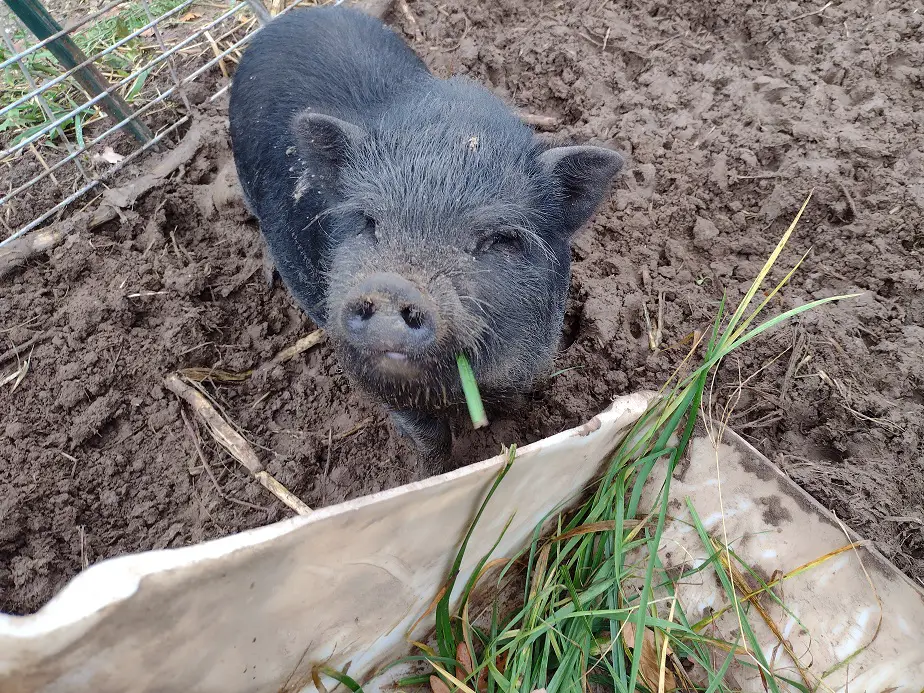I’ve toyed around with this one a lot to see just what will benefit my pigs.
Pigs can eat hay and it’s especially beneficial to confinement pigs. Most breeds of pigs can get some healthful nutrition from hay but will get very little energy from it. A pig’s gut can adjust to hay, and older pigs digest it better. Kunekunes, Potbellied Pigs, and Guinea hogs utilize hay better than other breeds.
So, let’s talk about the whats, whys, and nutritional factors here.
Hay Improves Gut Health in Pigs
Hay has the ability to naturally boost the gut flora and overall digestion health of swine. Its fiber, sugar, and complex proteins and starches feed numerous healthy bacteria that are generally lacking in pigs fed strict a diet of commercial hog feed.
Two common digestive issues that pigs have are diarrhea and stomach lesions. Hay and fresh greens have been shown to help treat and prevent diarrhea in pigs. it has a balancing effect on the microbiome of the gut, which is a very much forgotten but also a very large part of an animal’s overall health.
Hay and fresh greens also reduce stomach lesions, also known as the common pig ulcer. A diet high in raw grains is accompanied by a significant increase in stomach ulcers in pigs. You will have more trouble with that when pigs are raised in cramped or filthy areas, or without natural sunlight.
There is an exception. The herbicide Glyphosate, also called Roundup, damages the microbiome of the gut. Even in residual trace amounts, it is absolutely proven to kill a majority of the beneficial bacteria in the gut. We’re talking only in trace amounts here.
GMO hay with the altered gene known as Roundup-Ready is usually laced with glyphosate. Since the hay crop is able to be sprayed and not die, the herbicide is often sprayed directly on the crop to kill off weeds. It’s not a good thing. It’s not even all that good for people to eat that pork.
There are numerous recent studies showing that even the meat from animals fed Roundup-Ready GMO crops containing glyphosate residue kills off 50 percent of the beneficial bacteria in our gut. It leads to food intolerances and problems utilizing nutrition at the very least. Shocking but true. I said my piece.
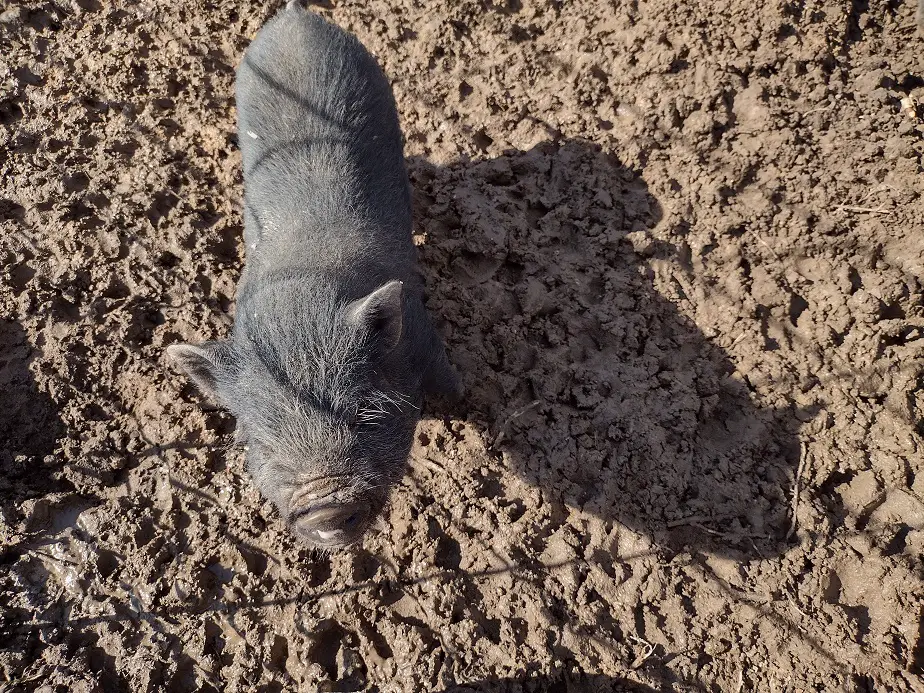
Hay Reduces Gut-Borne Parasites in Pigs
One of the amazing benefits of a higher fiber diet for swine is how it works to help clean the intestines. parasites, like Large Roundworm and Whipworm, are pretty common in pigs raised outdoors. Extra fiber helps clean out the gut, lessening the chance of a severe infestation.
It is not a treatment method, but it does help reduce the chances of a severe problem. This, combined with cleaning, rotating, and solarizing pig’s pens or pastures, and regular worm treatments, will stop any chance of a serious infestation from coming into play.
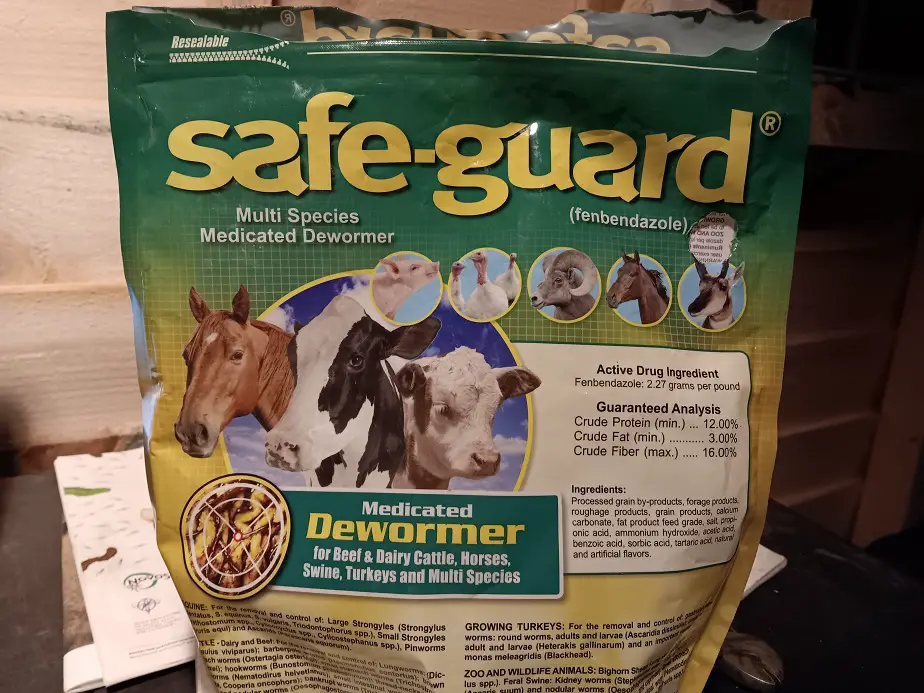
One thing you need for pigs, no matter your raising system, is a parasitic worm treatment. The best swine dewormer is Fenbendazole. It’s known by the brand name Safeguard. Safeguard is available as a medicated corn/alfalfa pellet. It’s the only way I can worm my pigs since they won’t stand still for an injection of Ivermectin. It’s easy and cheap.
- There is a stronger pellet for swine only. Here it is on Amazon
- There is a weaker pellet for general barnyard livestock, including swine. Here it is on Amazon.
I use the multi-species version because it’s what’s available in my local store and I can use it for my chickens too. It’s the most effective swine wormer and the easiest to administer. I use it on all weaned piglets and adults twice a year. Don’t go without it.
Hay Reduces Fecal Odor in Pigs
Hay reduces fecal odor in pigs by balancing the gut microbiome. It’s a combination of chlorophyll, starch, and fiber of plant matter that does it. Pigs fed some hay or pasture fodder have less E. coli and salmonella, which are two bacteria known to increase the foul smell often associated with pigs.
Once again, commercial hog feed makes it worse. A diet high in raw grains, particularly low-fiber grains like corn, increases the Salmonella and E. coli in the pig’s intestines. It’s both an increased concern for you and your family, and for the butcher.
I personally feed only green plant material to our pigs the last few days before butcher. That little action greatly reduces the chance of meat contamination when it’s butcher time. I butcher all our pigs at home and don’t want to take any unnecessary chances with harmful or deadly bacteria.
By the way, if your pigpen is unbearably smelly, something is wrong. Clean it, move it, and don’t let it get that bad ever again. I have 12 pigs right now. They are about 40 yards from the open window I’m sitting next to and I don’t smell a thing. No excuse folks, pigs shouldn’t be disgusting.
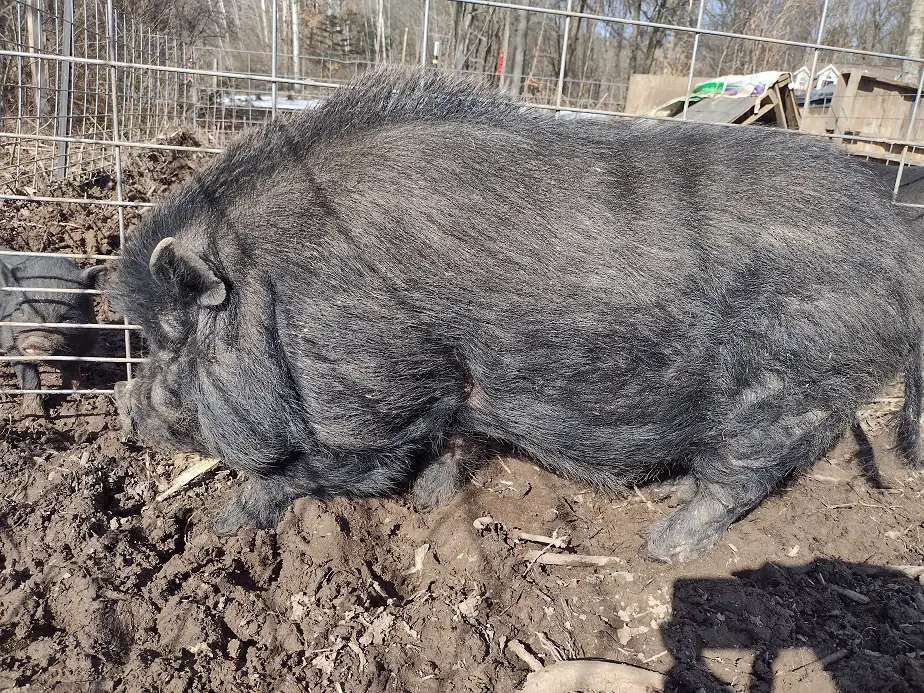
Hay Can Prevent White Muscle Disease in Pigs
Selenium is a mineral that pigs need. A lack of selenium causes White Muscle Disease. It’s characterized by stiffness of the legs, lameness, and a white color to the meat. It’s treated simply by adding enough selenium to a pig’s diet. Some hay crops are accumulators of selenium.
Alfalfa and clover tend to be accumulators of selenium. Pretty much any plant with a taproot is going to have more selenium. I like Chikory and Wild Carrot for their selenium content as well. On that note, trees and shrubs also accumulate selenium and the leaves can be fed to pigs.
I actually feed our pigs a ton of tree fodder. We have hundreds of coppiced treed that grow a thick leaf crop every year. I’ll give our pigs maple, oak, mulberry, poplar, or wild cherry leaves every day or so. It goes a long way to keeping them healthy, and provides all the minerals that may be lacking in their fermented grains diet.
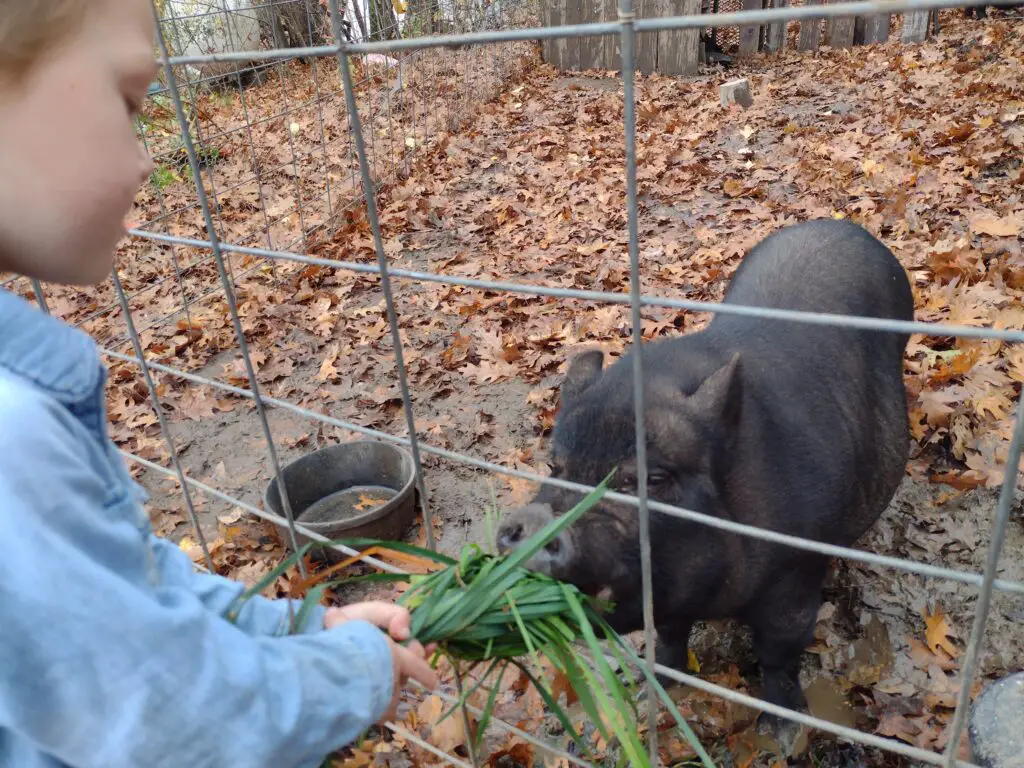
Hay Adds Vitamins and Minerals to a Pig’s Diet
Quality hay is high in calcium, iron, phosphorus, magnesium, zinc, and the trace minerals that pigs need. good hay can be used as a multivitamin and mineral supplement for pigs. Poor quality hay still has the minerals, but will lack several vitamins.
Alfalfa hay has long been considered the best green crop for pigs. Whether or not it’s the best, it’s certainly a darn good one. good, vibrant, alfalfa hay has respectable amounts of Pantothenic acid, Biotin, Inositol, Niacin, and Folic acid as well as vitamins A, D, E, K, U, C, B1, B2, B6, and B12.
All green hays are fairly high in vitamin D. It’s crucial to pigs and very beneficial to piglets if they get extra. I was told by one old Iawo pig farmer that a little alfalfa hay was his secret to having good pig growth during the winter. He attributes it to the vitamins, and how it improved gut health.
Now, you don’t necessarily need to run out and buy a bale of hay for your pigs. Perhaps it would be a good idea. Honestly, you can get better results by giving fresh grass clippings to your animals. That’s actually the reason I insisted on finding a mower with a bag.
Fresh greens have a ton more vitamins (particularly vitamin A) and have a much smoother and more beneficial effect on their gut. One of the “secrets of old” is to give your pigs all the weeds pulled from the garden. a nice handful per pig really boosts them.
Fresh greens are our secret to the health, vigor, and vitality of our pigs. It also has a wonderful effect on the meat, creating pork with a richer and deeper flavor and with a very different fat structure. Pigs fed green fodder will have high-oleic acid fat (the healthy stuff).
Related Articles:

